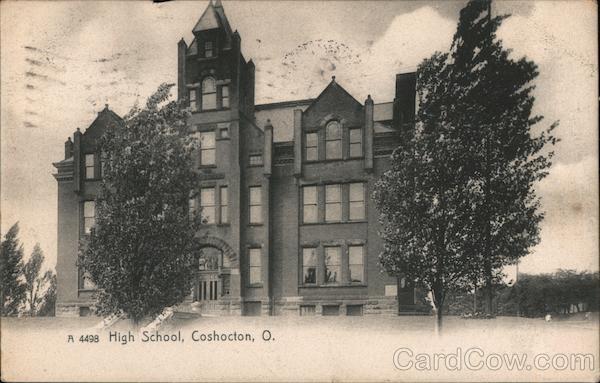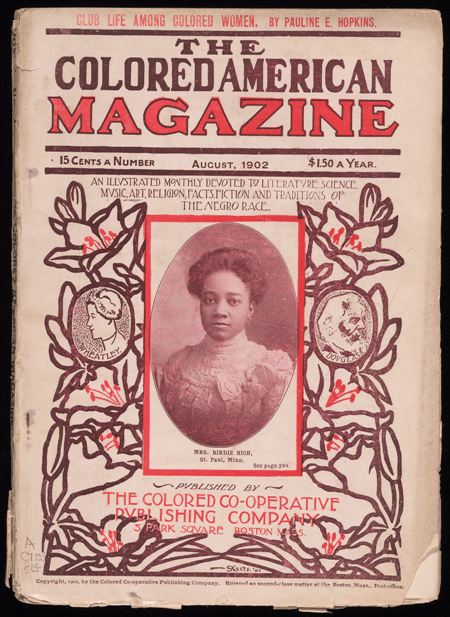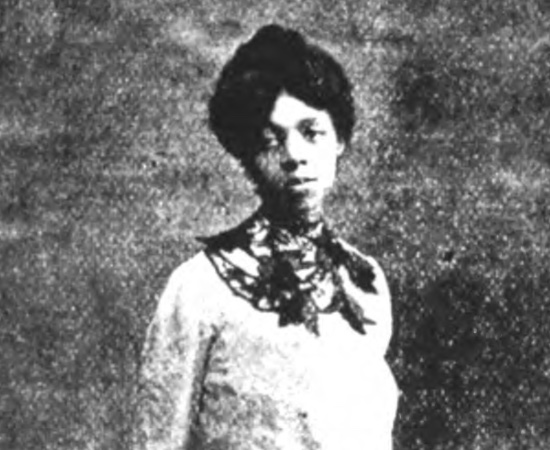This story is the third part of a series of written and audio stories called Black Lives in Licking County, a collaboration between the NAACP of Licking County, The Reporting Project at Denison University, and the Newark Advocate.
NEWARK – In the summer of 2017, a group of women stumbled upon a bit of mystery as they gathered in Licking County Library for their weekly book club meeting. They were there to discuss a story, a witty romance titled “An Equation,” by Gertrude Dorsey Brown originally published in 1902.
The biographical information on her was sparse, tucked into the last pages of the anthology of stories by African American women writers they were reading. A short entry noted, though, that she was from Newark, Ohio. This sparked excitement and curiosity. Brown’s life was unknown by any in the room and, soon, they would discover, by most in Licking County.
Originally founded to help people get their GED, the club lasted from 2016 to 2018 and eventually expanded to include a mix of women—some in recovery from addiction, some who had been incarcerated, some from the local churches, but all bonding over life and books. Short-lived but time well-spent together, the group enjoyed talking, joking, eating, and reading stories from or about African American women.
The group’s common denominator was social justice. They read Orange is the New Black, Wonder, Hidden Figures, I Know Why the Caged Bird Sings, and Great Short Stories by African-American Writers—to their surprise, that last selection led to some amazing discoveries.
“[Gertrude Dorsey Brown] was a person who could connect us with the past, and with the future,” says Caroline Cook, a book club member who has been especially interested in re-discovering Brown’s writing.
Another member, Kandice Hairston, says of their investigation into Brown’s life, “It was like [being on] a treasure hunt and finding the Hope Diamond.”
Roots and Development

Brown was born on August 1, 1876/77, in Coshocton, OH, to Clement Dorsey and Martha Johnson Lucas. Little is known of her mother, but her father was born on December 25, 1839, and spent his young adult life working on farms and canal boats. When he was 27, he moved to Steubenville, OH, to work on steamboats and suffered a near-death experience when, one day, a boat he was working on sank. After passing through Newark to attend school and work in a barbershop, he landed in Coshocton County where he established his own barbershop. Industrious, Mr. Dorsey became a respected businessman and entrepreneur—even getting a patent for a special fly paper he invented. He was also the county’s first Black juror.
Following in her father’s hard-working footsteps, Brown grew up in Coshocton, and graduated from Coshocton High School in 1896—the only African-American student in a class of 11. She continually maintained honor roll throughout her years and was a member of the school’s Literary Society.
Brown had been a sales representative for the Black-owned Cleveland Gazette newspaper while in high school and continued this line of work when she moved to Newark as a representative for Colored American Magazine. Founded in 1900, it steadily became the most important national magazine for African-Americans in its prime, and a known platform for uplifting Black literature, history, culture, and social justice amidst the nadir of racist violence in the country.
As they sought to unearth more details about Brown, the women’s book club discovered that while she worked as a sales representative, Brown had also written a number of stories for Colored American Magazine. Her work, some nonfiction but mostly fiction, appeared in the magazine between 1902 and 1907 and often engaged with pertinent issues such as racism and Jim Crow through wry story plots.

In Brown’s story, “A Case of Measure for Measure,” a group of white women blacken up their faces to attend a “blackface ball,” only to find out afterwards that the paint won’t come off. The women must ride in the segregated car on the train, and in the process learn firsthand some hard lessons about racism and class.
Cook says she appreciates this about Brown’s storytelling. “She always adds a little twist in her stories,” Cook says, and notes that what starts out as dark humor always goes deeper to the core.
Brown’s stories transcend, but do not dismiss, class, race, and gender. They often speak to the hidden truths of what makes us human and the pride involved in shielding those commonalities.
Giving Space to a Brilliant Woman
The fact that Brown was from Newark meant a lot to the women in the book club, but, even more, they were compelled by how Brown made women the central characters in her stories.
“Women need to have a voice,” Cook said, “and our stories aren’t told very well. We’re not heroes of our stories, a lot of times.” This is especially true for Black women like Gertrude Dorsey Brown.
Hairston is keen to the fact that Brown was talented and overlooked, similar to many others along the way. “There are a lot of women of color in Newark, Ohio,with extraordinary lives that need to be found…hidden treasures,” Hairston says.
But Brown’s life still remains a mystery.
“For a lot of these women writers, there’s nothing about them. There’s not much information [about her],” says Cook. Even her burial plot is unmarked, absent of a headstone. Brown, who died in April 1963, is buried in an unmarked plot in Cedar Hill Cemetery.
And yet her anonymity did not prevent later writers from being influenced by her, despite only having a few published works.
Redmon Fauset, influential Harlem renaissance writer and editor of W.E.B Du Bois’ The Crisis (which was inspired by Colored American Magazine) created a character named Gertrude Brown in her 1931 fictional novel The Chinaberry Tree. The story deals with race-passing, family drama and discrimation in a similar way to Brown, which suggests her role in popularizing this genre of nonfiction in the early 20th century.
“I’d like to see her recognized as an author,” Cook says resolutely, “And I’d like to see her have a gravestone. I would like to see [more recognition of] Black history in Newark.”
On a chilly autumn day, one year before the book club disbanded, Cook, Hairston and roughly a dozen more members celebrated Gertrude Dorsey Brown’s life with a memorial at Cedar Hill Cemetery. In a video of the event, it’s clear this is more a joyful remembrance than a sorrowful ceremony. Huddled in their coats and windbreakers, the women talk about Brown’s legacy; they smile, crack jokes, take pictures, and place flowers on the spot of Brown’s unmarked grave.
“She’s probably smiling somewhere, saying, ‘It’s about time!’” Pat Wanat says with a laugh.
They recognize Brown had literary talent in a time when graduating from high school was a feat for women, especially Black women, and writing for a leading national magazine was an even greater accomplishment. The women also relate to how Brown’s life was summed up in death by her roles as a mother, grandmother, and church member, but not her talents beyond those roles.
“I think she represents many other women too, who have been remarkable, and not remembered,” says Carol Apacki.
Hairston stands resolutely in the middle of the group, offering her tribute. “For being a writer and for your words, to still being read. Although others don’t know about you, we do now.”
If you have any information about the life of Gertrude Dorsey Brown, please contact narrativejournalism@denison.edu. This story is part of an ongoing project to document her work.
You can read Brown’s A Case of Measure for Measure here:
Chapters 1 & 2 can be found on pages 277- 282
Chapters 3 & 4 can be found on pages 329- 332
Chapter 5 can be found on pages 501-504
Chapters 6 & 7 can be found on pages 577-580
Chapter 8 can be found on pages 651- 656
Chapters 9 & 10 can be found on pages 769-772

